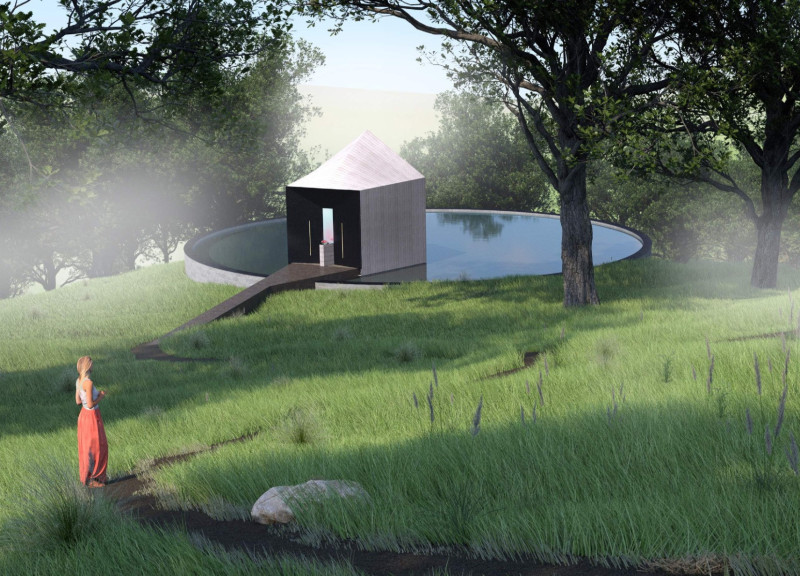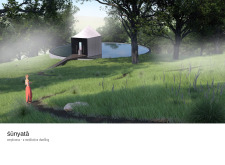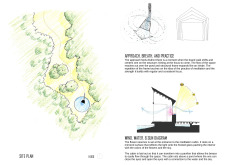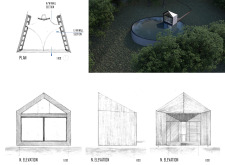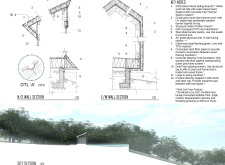5 key facts about this project
At its core, the project represents a modern interpretation of meditation spaces, merging contemporary architectural principles with natural elements to create a harmonious living environment. The response to its context is a primary focus; the dwelling is set strategically within a natural landscape to promote a sense of serenity. By placing the structure amid greenery and incorporating water features, the architecture invites nature into the experience, blurring the lines between the built environment and the surrounding ecosystem.
The primary function of the "śūnyatā" project is to provide a tranquil space for meditation, reflection, and the practice of mindfulness. The design incorporates flexible spaces that cater to both individual meditation sessions and communal gatherings. This adaptability ensures that the dwelling can meet various needs, making it a versatile environment for both introspective activities and social interaction.
Upon examining the design, one can appreciate the simplicity and clarity in its form. The architecture features clean lines and a steeply pitched roof, which not only serve an aesthetic purpose but also contribute to the functionality of the space by facilitating rainwater drainage. The use of large expanses of glazing enables abundant natural light to penetrate the interior, while also providing continuous visual connections to the outside landscape. This design decision enhances the overall meditative atmosphere, as occupants can enjoy views of nature from almost any part of the dwelling.
The choice of materials plays a significant role in the spatial experience and aligns with the project's sustainable focus. The use of locally sourced timber, specifically Radiata Pine, reflects a commitment to environmental responsibility. This decision establishes a connection between the dwelling and its surroundings while ensuring a low carbon footprint. Furthermore, the inclusion of mineral wool insulation contributes to thermal performance and energy efficiency, making the building comfortable throughout the year. The use of dual-pane glazing not only enhances insulation but also allows for optimal natural light without compromising privacy.
Unique design approaches are evident throughout the project. For instance, the incorporation of a reflective pond serves both aesthetic and environmental functions. It enhances the tranquility of the space and encourages biodiversity, creating a nurturing habitat for local fauna. Likewise, the use of mirrored surfaces within the design reflects the natural beauty of the surroundings, encouraging a deeper engagement with the environment.
The architectural layout is organized to facilitate a seamless flow between indoor and outdoor spaces. The strategically placed pathways lead visitors from the outside into a meditative environment, symbolizing the journey from the external world into a space of reflection. The serene transition serves as a reminder of the importance of mindfulness in achieving personal peace.
In summary, the "śūnyatā" project provides a notable exploration of architecture designed for meditation and self-discovery. Its minimalist approach, along with an emphasis on sustainable materiality and integration with nature, offers insightful architectural ideas that address contemporary needs for mindfulness and peace. Readers are encouraged to explore the project presentation further to gain deeper insights into its architectural plans, sections, and overall design philosophies. The thoughtful details of this project present a compelling case for the role of architecture in creating spaces that enhance well-being and connection with the natural world.


